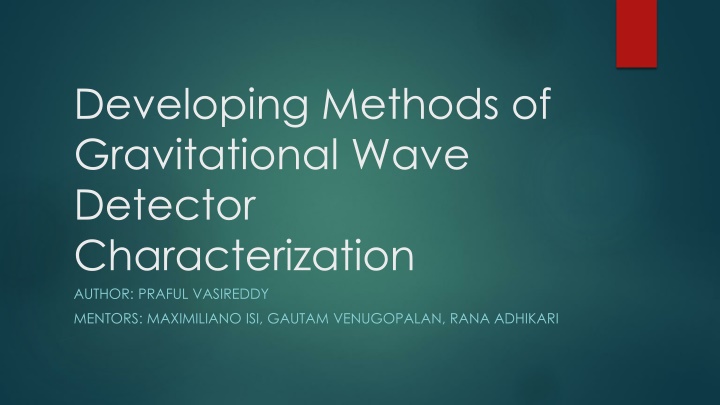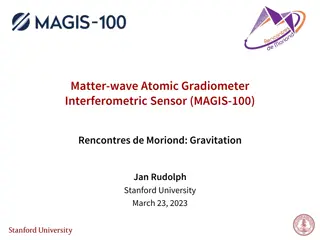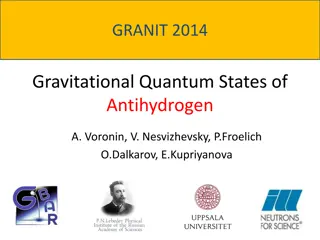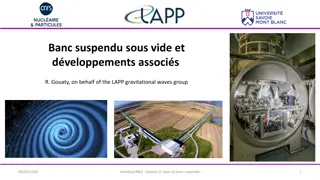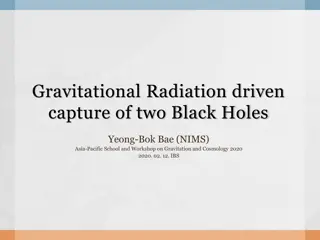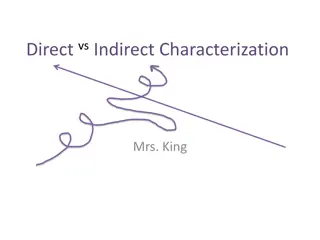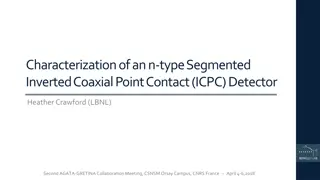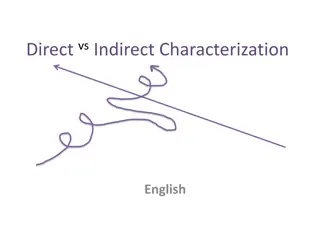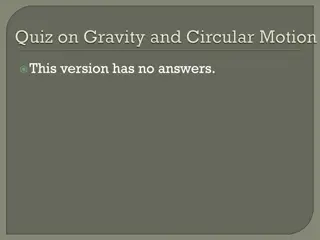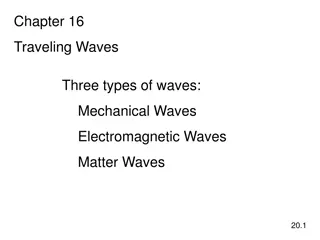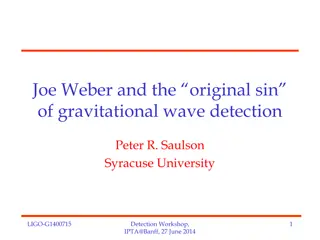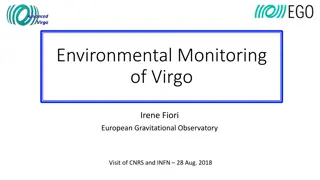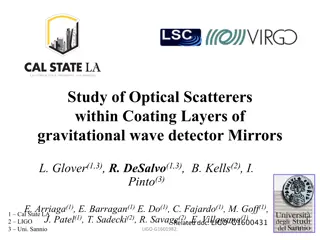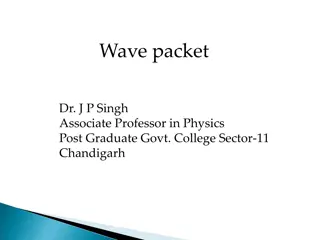Methods of Gravitational Wave Detector Characterization
Developing methods for gravitational wave detector characterization is crucial for understanding noise sources, distinguishing noise from signals, and improving detection range. Benefits of small-scale prototypes include easier testing and control of interferometer features. Techniques such as ALS (Arm Length Stabilization) are examples of new control systems being developed. Detailed monitoring through webpages, MEDM screens, and integration efforts aim to enhance the physical information display for better debugging and maintenance.
Download Presentation

Please find below an Image/Link to download the presentation.
The content on the website is provided AS IS for your information and personal use only. It may not be sold, licensed, or shared on other websites without obtaining consent from the author.If you encounter any issues during the download, it is possible that the publisher has removed the file from their server.
You are allowed to download the files provided on this website for personal or commercial use, subject to the condition that they are used lawfully. All files are the property of their respective owners.
The content on the website is provided AS IS for your information and personal use only. It may not be sold, licensed, or shared on other websites without obtaining consent from the author.
E N D
Presentation Transcript
Developing Methods of Gravitational Wave Detector Characterization AUTHOR: PRAFUL VASIREDDY MENTORS: MAXIMILIANO ISI, GAUTAM VENUGOPALAN, RANA ADHIKARI
Benefits of having a small-scale controls prototype Controls prototype: not worried as much about controlling the noise, main goal is to test new features regarding controlling parts of the interferometer Convenient to make changes at the interferometer Less expensive and catastrophic when something goes wrong at a small-scale prototype Easier to handle a 100x smaller instrument Example of new controls system developed at the 40m: ALS (Arm Length Stabilization)
Detector Characterization Detector characterization: understanding state of the interferometer in its environment Detecting gravitational waves is possible because of the work to study and identify noise sources Must be able to distinguish noise from signal to make any detections Improving knowledge of noise sources increases the range in which gravitational waves can be detected Learning how to isolate and remove noise from the signal
Summary Pages Webpages that display various plots of data channels which provide information about different parts of the interferometer Updated every 30 minutes Open to the public Helpful for quickly diagnosing issues and debugging Limitation: no information about physical state of detector, only display readout of data channels
MEDM Screens MEDM: Motif Editor and Display Manager Status screens which display the current state of different parts of the interferometer Display information about physical status of interferometer Useful for debugging, checking that things are working
MEDM Tab on Summary Pages Goal: integrate MEDM screens into summary pages so that physical information is displayed Began with some scripts that took screenshots of MEDM screens Implemented into summary pages Archive lookup function that allows users to check an MEDM screen at a given time for debugging and identifying issues Could be transferrable to actual sites (Guardian) MEDM
Measuring Coupling of Acoustic Noise to Interferometer Goal: determine what effect acoustic noise at the interferometer has on data readout and cancel that effect Need to amplify microphone signal EM172 microphones have a frequency range of about 50 Hz to 20 kHz Previous work: amplify at one central location New system: amplify at every microphone Noise picked up in signal travel is now no longer amplified
Setting Up the Microphones Setup needs to be isolated from ground motion and not pick up motion of the air at the microphone Suspension accomplishes this- need a heavy enough box Microphone needs to be attached to amplifier circuit Needs to be able to be changed easily if gain is tweaked, etc.
Microphone Locations at the 40m Tradeoff between having the microphones near the noise sources and near the optics and important parts of the interferometer Near noise source: get clearest data about the noise being produced in the interferometer, not much information about coupling to interferometer readout Near interferometer: observe the noise that the interferometer hears Future work: design a system that optimizes the location to observe coupling
Next Week Make a prototype box with amplifier circuit and suspend Set up a data channel Add new tab to summary pages
Acknowledgements Maximiliano Isi, Gautam Venugopalan, Rana Adhikari, Eric Quintero, Steve Vass, Lydia, Aakash Patil, Varun Kelkar, Koji Arai, Yoichi Aso
